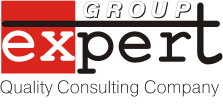| Section: |
7.4.2 f |
Section Title: Requirements for Test Specimens
|
| 9100 C Clause |
Purchasing Information: Purchasing information shall describe the product to be purchased including, where appropriate -
f) requirements for test specimens (e.g., production method, number, storage conditions) for design approval, inspection/verification, investigation or auditing,
|
| Generic Expectation |
It is expected, as part of the product realization purchasing process, that the organization clearly define to suppliers, the requirements for test specimens. Specimen requirements should include expectations using the production method(s), the number of specimens or units, and the storage conditions to maintain the specimens. The specimens are intended for design approval, customer (Buyer) inspection or verification and for future investigation or auditing. The specimen requirements must be documented, agreed to by both parties, and the records maintained. (reference 9100 7.2.1; 7.2.2 and 7.2.3 for Customer Related Processes)
The requirements of this specific clause are typically contained in contractual requirements, customer or industry specifications and in 3D models / drawings. The understanding of these requirements is extremely important before contract acceptance. Test specimens and records are retained for a required period to ensure proof of design and product certification.
|
| Product Type: |

COTS/Standards |

Raw Material |

Build-to-Print |

Supplier Design |
| Specific Expectation |
Organization (Buyer) |
Buyer will need to ensure all product and performance characteristics meet design requirements prior to ordering. Any requirements for test specimens should be the Buyer's responsibility to procure and maintain unless otherwise negotiated. |
Buyer will ensure all requirements for test specimen manufacture, quantities, retention, inspection/verification are explicitly stated on the contract for the product. Specimen requirements should be defined and released in 3D models, drawings, specifications,and/or test procedures. Product acceptance arrangements are typically agreed upon during contract negotiations. |
| |
|
The Buyer will need to flow down requirements and arrangements through contractual documents for acceptance and/or special approvals. |
| Supplier (Seller) |
The Supplier needs to ensure the product and any test specimens, meet contracted and design requirements. |
The Supplier needs to review the contract and product requirements prior to contract acceptance to ensure the product and any test specimen requirements are clearly understood. |
The Supplier needs to perform a thorough review of customer requirements for the product and test specimens. Assure the requirements are clear. Ensure any performance requirements are also understood. Define a process for communication with the customer to rectify any issues. |
| The Supplier needs to maintain required documentation, identification and traceability for the period of time specified. |
| The Supplier also needs to assess any requirements associated with test specimen delivery or post delivery, any statuatory or regulatory requirements, undocumented requirements necessary for intended use or any special requirements. (See 9100 paragraph 7.2.1 Determination of Requirements Related to the Product) |
| Documentation to demonstrate conformance to expectation (what the auditor would look for) |
Organization (Buyer) |
The Buyer should have a process map that covers the purchasing of any required test specimens in a format that depicts the who, what and when. |
| The Buyer should have a copy of the contract defining any requirements to the supplier for test specimens. |
| The contract should have evidence of a review by the Buyer's cognizant Quality organization and the supplier's acknowledgement of acceptance. |
| The Buyer should have an Approved Suppliers List with the contracted supplier listed as approved for the product(s) and any test specimens to be procured. |
| The Buyer should have documented procedures, checklists, work instructions for the process of procurement that covers test specimens. |
| Supplier (Seller) |
The Supplier should have a process map that covers any required test specimens in a format that depicts the who, what and when. |
| The Supplier should have a copy of the contract defining any requirements for test specimens. |
| The Supplier should have documented procedures, checklists, work instructions for the process that covers the making of test specimens. |
| The Supplier also needs to have documented any requirements associated with required test specimens to cover their obligations for delivery or post delivery, statuatory or regulatory requirements, any undocumented requirements necessary for intended use, or any special requirements. |
| Examples (Best Practices) |
Organization (Buyer) |
The Buyer could use the SAE ARP 9009 - Contract Clauses for defining contract requirements and/or a matrix describing the applicable QMS requirements for the buyer's approved suppliers. |
| Supplier (Seller) |
|
|
|
|
